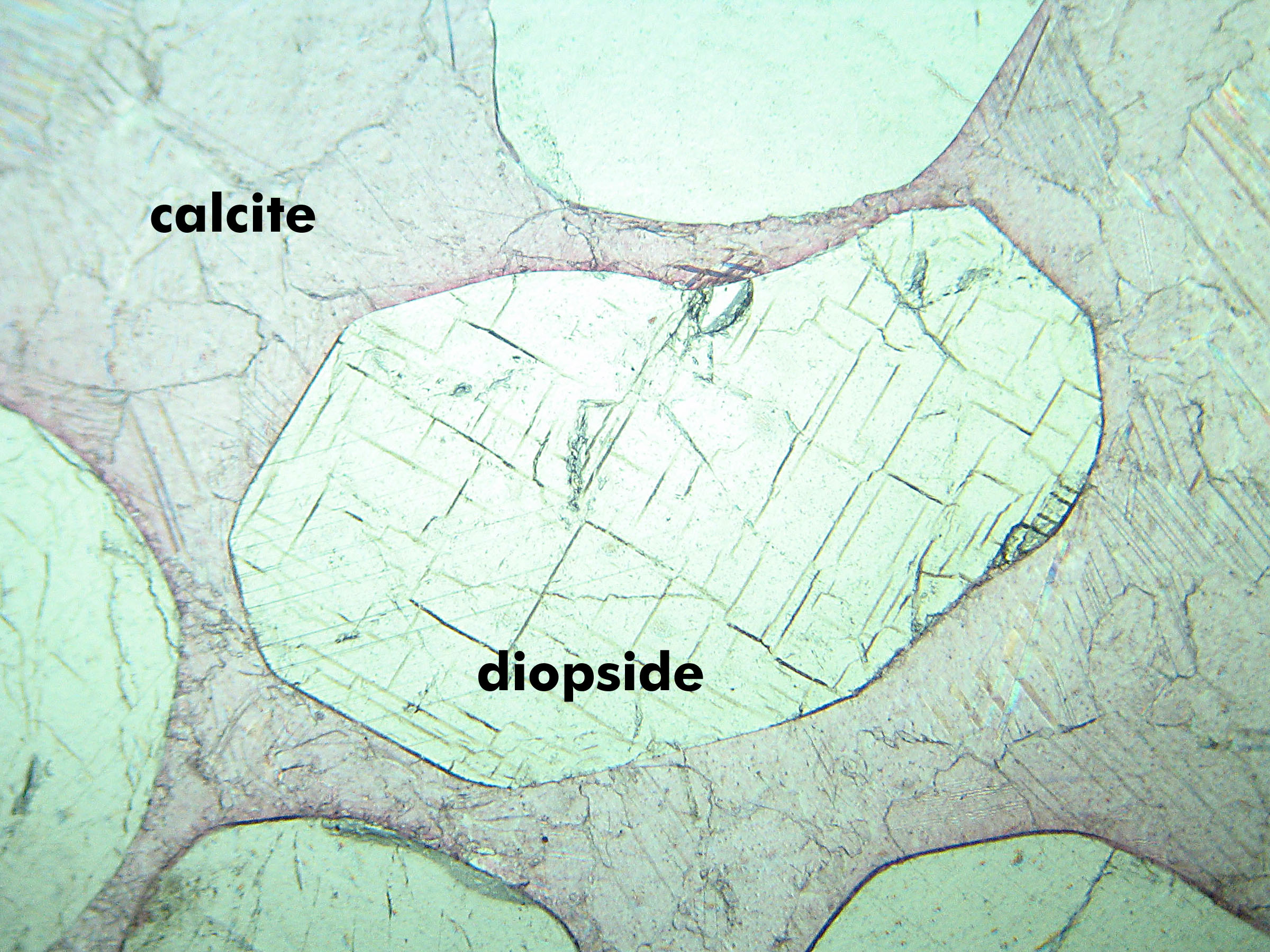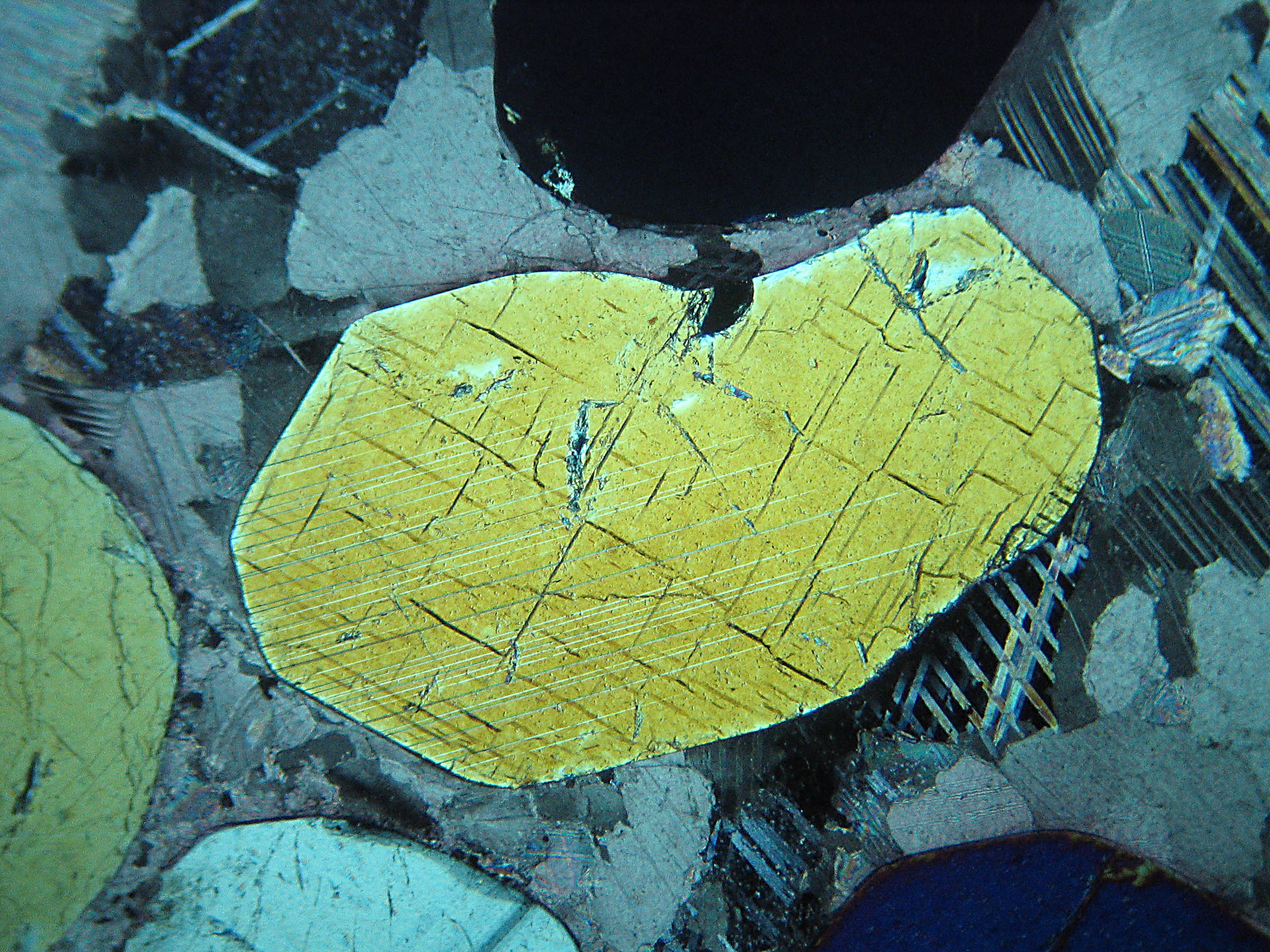Diopside in a Dolmitic Marble


These photos show diopside in a marble
from the Adirondack Mountains, New York. Field of view is about
2 mm. The football shaped diopside grain in the center shows
classic near 90o angle between cleavages
- diagnostic of pyroxene. It also shows incipient twinning
(XP). Diopside's interference colors
range up to mid second order but in views that show two cleavages
tend to be lower. This diopside is in a matrix of dolomite.
Here the dolomite appears slightly pinkish because the thin section
was etched and stained with alizarin red stain to help distinguish
calcite from dolomite (calcite stains a darker red color). The
dolomite is twinned and shows very
high order interference colors;
they appear as pastels, in places almost pearly white.


